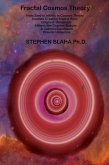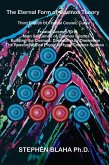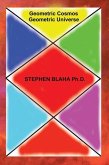Physics has deepened to acceptance of quarks as constituents of elementary particles. Because quarks have the Strong Interaction they are confined. They exist only within hadrons at present energies. Yet they are particles just as electrons and neutrinos are particles. Recently this author introduced the concept of gambols in the Limos spaces sector of Cosmos Theory. They are the sub-particle constituents of fundamental fermions: quarks and leptons. A quark or lepton is composed of confined gambols. Gambols have a more abstract nature than quarks. Sets of gambols appear in fermions probabilistically - not in definite numbers. A fermion has an infinite number of sets of gambols. The number of gambols in a gambol set is a power of two: 2, 4, 8, 16, and so on, based on Limos space features. Just as photons in a black body have a Planck distribution, sets of Gambols in a particle have a Planckian probability distribution. Gambols have mass and momenta and are confined to particle interiors. Gambols inherit the spin and internal symmetry of their parent fermion. Gambols are at a deeper conceptual level than quarks. In a detailed analysis, this book finds that a fundamental fermion seems to have an average of about 8 gambols. This book develops a comprehensive Gambol Planckian Model within the framework of Limos and Cosmos Theory. The Model gives 1. An accurate model of the electron-proton Deep Inelastic Scattering structure function F(ω). 2. A model of quark and lepton resonances from charm quarks through the t quark, and of charged, and neutrino, lepton resonances, 3. Gambol-based hadron decay, and hadron-hadron scattering. 4. A numerically accurate approximation for gambol confinement within fundamental fermions based on an ideal gambol gas confined by a Casimir vacuum force. 5. An interpretation of Electromagnetic and Weak Interaction quanta as unconfined gambols. Bosons have no Dirac sea. Thus no confinement. A detailed examination of the Gambol Model leads to significant experimental and theoretical support for Cosmos Theory. Probabilities first appeared in the quantum theory of particle motion. Now a new form of probability appears in the internal probabilities of gambols within particles. The result is a very significant emerging trend in the abstractness of Fundamental Physics towards a total reliance on Probability for Reality. A major book!
Hinweis: Dieser Artikel kann nur an eine deutsche Lieferadresse ausgeliefert werden.
Hinweis: Dieser Artikel kann nur an eine deutsche Lieferadresse ausgeliefert werden.








